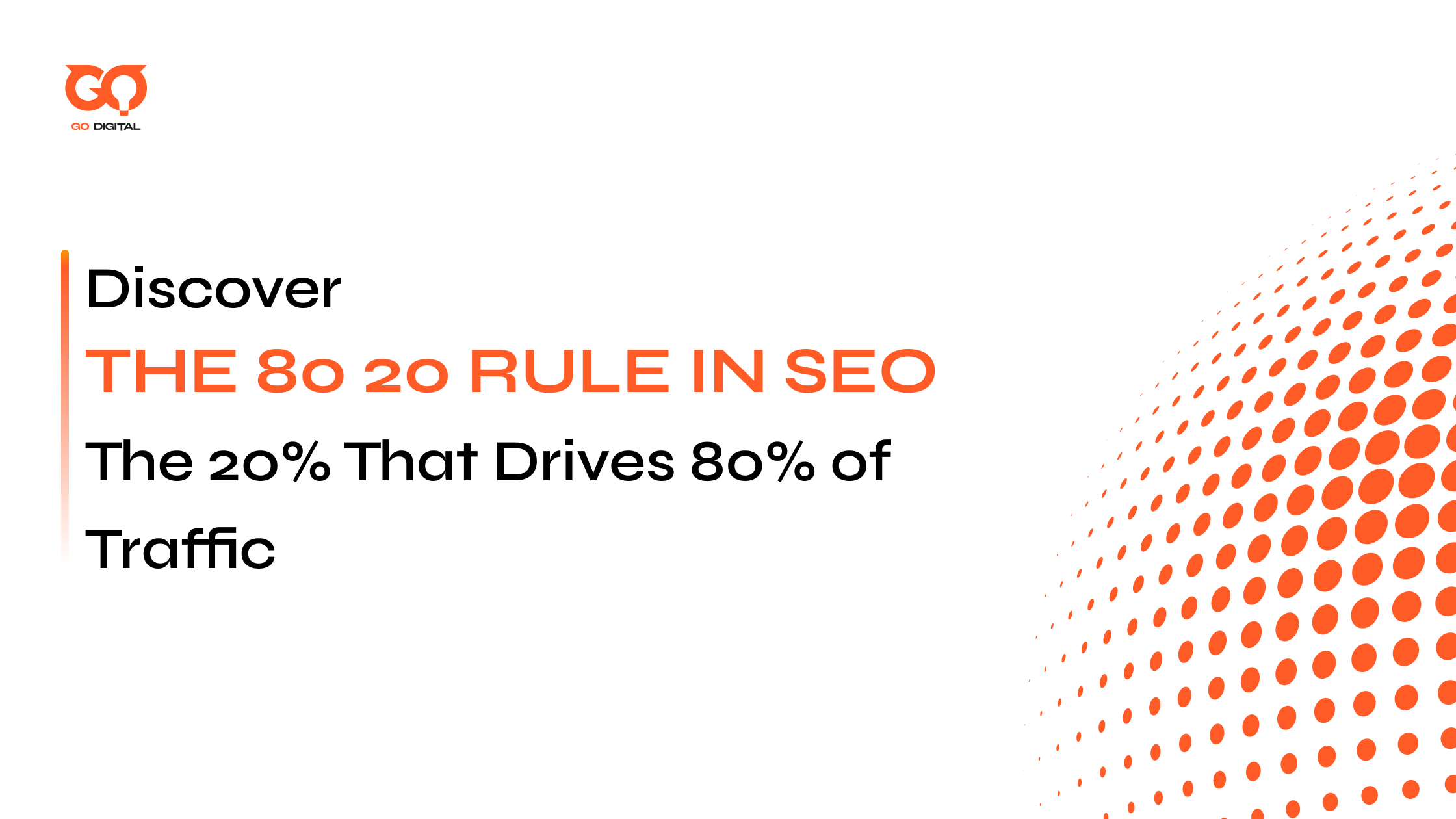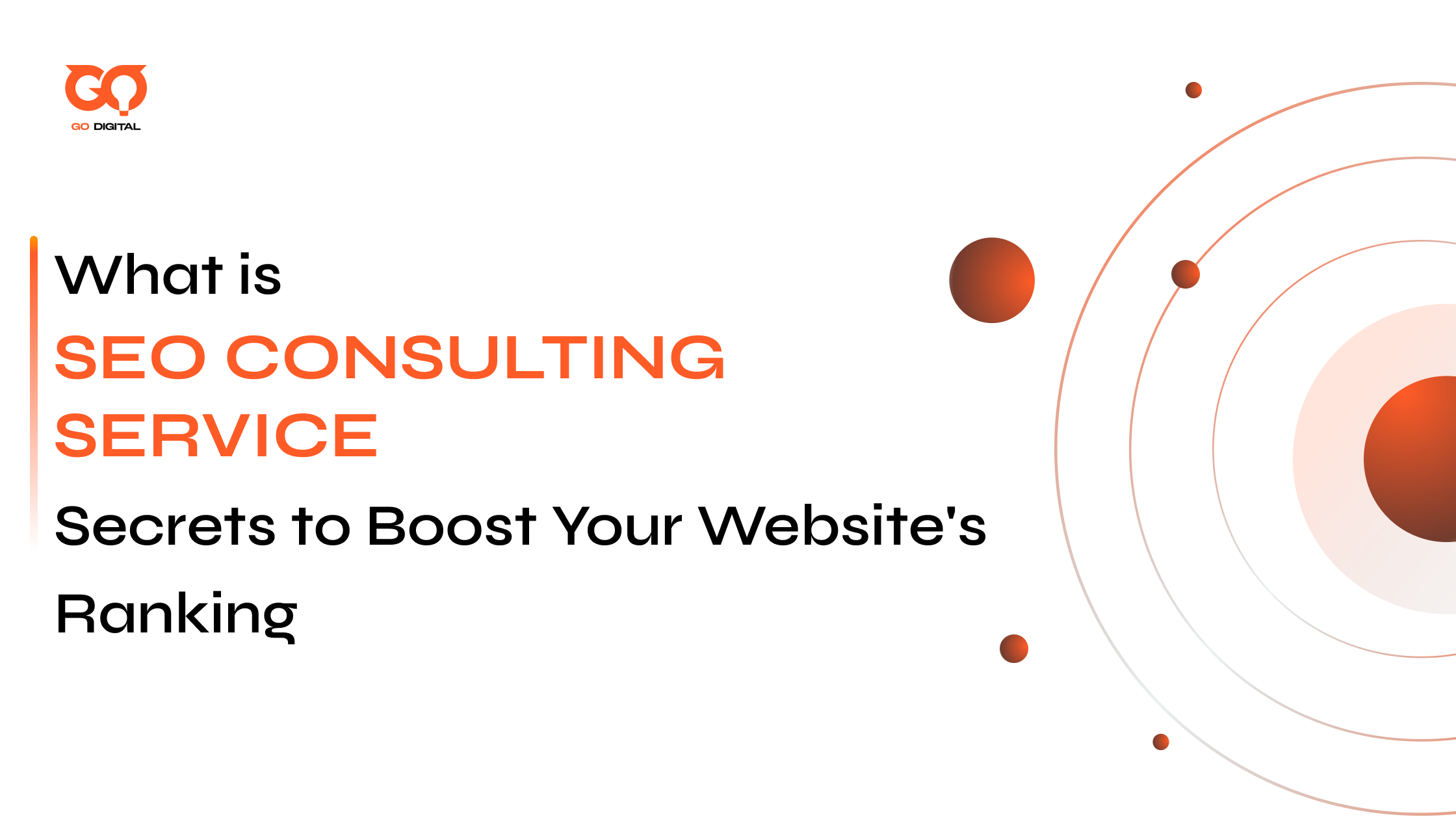If you’re running a small business and want to reach more people without burning your ad budget, then content marketing for small businesses could be your secret weapon. It’s about creating a smart, strategic plan that attracts the right people and turns them into loyal customers.
Below, Golden Owl Digital breaks down everything you need to know about why content marketing is important, how to do it right, and what types work best for small businesses. Let’s explore now!
Key Takeaways
|
What is Content Marketing for Small Business?
To grow effectively, content marketing for small businesses is more than a trend. Let’s break down what it really means and why it matters.
Definition of Content Marketing for Small Business
Content marketing for small businesses means creating and sharing valuable content consistently to attract, engage and retain customers. It focuses on building long-term relationships with the target audience.
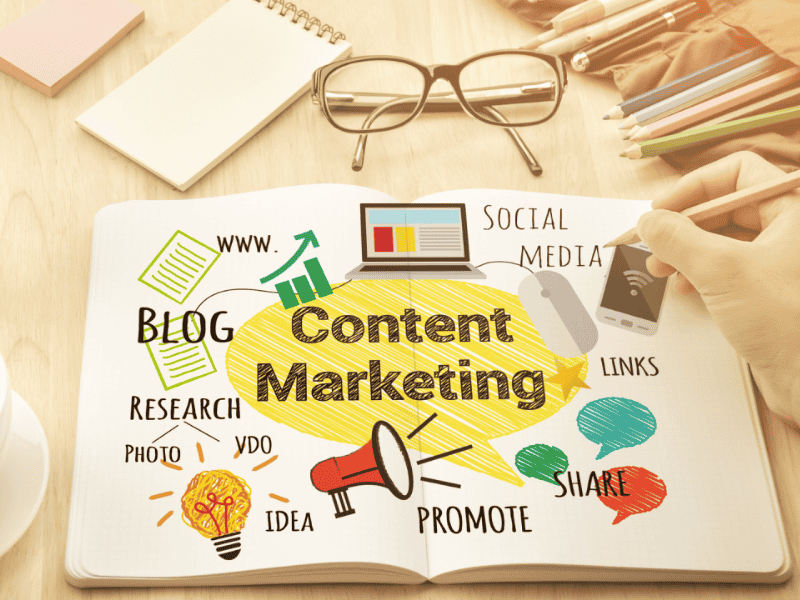
The main goal is to offer real value, not just promote. This approach builds trust, educates and increases brand visibility.
Here are some popular forms of content marketing:
- Blog Posts: Informative articles optimized for SEO to drive organic traffic.
- Videos: Visually engaging formats to explain, entertain or educate.
- Infographics: Easy-to-digest visual summaries of complex topics.
- Social Media Posts: Quick updates, promotions or engagement hooks.
- Email Campaigns: Personalized messages sent directly to your subscribers.
These formats work because they do three things exceptionally well:
- Build Trust: Valuable content that isn’t always selling shows customers you’re here to help. This builds authenticity and turns loyal readers into buyers over time.
- Educate Customers: Answer questions, clear up misconceptions and explain your solutions. Informed customers feel confident and more likely to choose your product.
- Increase Visibility: Publishing fresh, relevant and SEO-friendly content boosts your search rankings and social media presence – working like a 24/7 digital storefront that consistently draws in new leads.
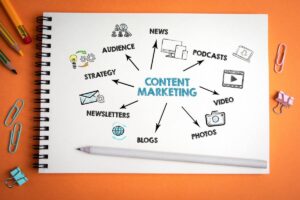
Importance of Content Marketing for Small Business
For small businesses, content marketing is an effective and cost-efficient way to build brand awareness, engage with potential customers and boost sales without significant advertising budgets. It’s a long-term investment that helps businesses stand out in competitive markets.
- Cost-Effective: A single blog post or video can keep attracting traffic for months or even years.
- Long-Term ROI: Unlike ads, content keeps giving. It becomes a library of value that works for you 24/7.
- Customer Retention: You stay top-of-mind by showing up regularly in your audience’s inbox, feed or search results.
Small business owners often don’t have time or money to waste. That’s why content marketing is a game-changer. It scales and keeps delivering results without needing constant ad spend.
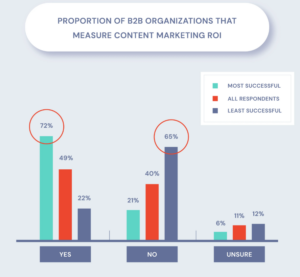
Leading B2B brands are 72% more likely to measure content ROI than weaker ones
(source: Growfusely)
5 Types of Content Marketing for Small Business
Small businesses can leverage various content marketing, each serving a specific goal. Here are the most powerful formats to explore.
- Blog posts
- Video marketing
- Social media content
- Email marketing
- 5. Infographics and visual content
1. Blog Posts
Blogging regularly can improve your website’s SEO. It helps you connect with your audience and share helpful content about your industry, products or services. Over time, this builds trust and positions your brand as an expert in your niche.
- Improves search rankings by targeting long-tail keywords.
- Builds trust by answering customer questions.
- Generates leads through call-to-actions and lead magnets.
Example topics:
- How-to guides: Create step-by-step tutorials that help your audience solve specific problems or complete tasks related to your services or products.
- Industry news and trends: Share updates on the latest cleaning trends, tools or eco-friendly practices to show you’re up to date and knowledgeable.
- Product comparisons: Write honest comparisons to help customers make informed choices and build trust.
- Customer Success Stories: Feature real clients and their positive experiences, showing how your service made a difference with quotes and results.
Let’s say you run a home cleaning service. A blog titled “10 Ways to Keep Your Kitchen Germ-Free” can attract organic traffic while subtly promoting your services. That’s smart content marketing for business.

2. Video Marketing
Videos are highly engaging and can be used to showcase your products, explain services, or tell stories. Videos work particularly well on social media and platforms like YouTube and Instagram. According to Wyzowl, 93% of marketers say video gives them a good ROI (source).
Popular video formats:
- Product Demos: Show how your product works in action.
- Explainer Videos: Break down a service or process.
- Behind-the-Scenes: Humanize your brand and team.
- Q&A Sessions: Address common customer questions live.
Short-form videos are gold on Instagram Reels, TikTok, and YouTube Shorts, while longer tutorials work well on YouTube and your website.
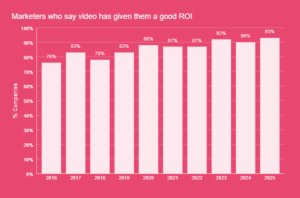
In 2025, 93% of marketers say video marketing has given them a good ROI
3. Social Media Content
Social media is a dynamic space where people connect directly with their audience and grow loyal communities. Each platform has its own unique vibe, algorithm and audience behavior. So, the key is posting the right kind of content on the right platform.
Let’s break it down:
- Facebook: Perfect for community building, reviews, and sharing longer-form content like blog links, live videos, or events. Use Facebook Groups or business pages to create ongoing engagement and respond to comments to show your brand’s personality.
- Instagram: This is your visual playground. Use Stories for behind-the-scenes peeks, Reels for fun, short-form video, and your main feed for polished visuals. Perfect for showcasing products, before/after shots, or brand lifestyle imagery. Hashtags here help discoverability.
- LinkedIn: Ideal for B2B content and professional storytelling. Share thought leadership articles, company milestones, client testimonials, or employee spotlights. Content here should be informative, trustworthy, and insight-driven.
- Twitter (X): Best for real-time updates, witty takes, trending conversations or quick customer support interactions. Threads and polls help spark engagement, while hashtags join you in ongoing conversations.
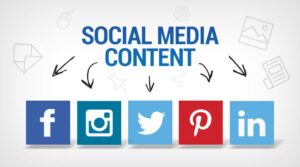
Posting the right kind of content on the right platform
| >>Read more: SMO Social Media Optimization |
4. Email Marketing
Email marketing is a direct way to stay connected with your audience. It offers an incredible ROI of about $36 for every $1 spent, according to Litmus (source), and it’s ideal for nurturing leads and maintaining long-term customer relationships.
Here are the core types of email content and how they work:
- Newsletters: Recaps, educational articles, and updates bundled into a neat package. Keeps your audience in the loop and builds familiarity over time.
- Promotions & Discounts: Perfect for flash sales, seasonal campaigns, or exclusive member-only deals. These create urgency and drive quick actions.
- Product or Service Updates: Announce new arrivals, features, or updates. Keep it short, clear, and link back to your landing page or store.
- Welcome Sequences: Introduce your brand with a series of automated emails after someone signs up. Share your story, top blogs, or how-tos to keep them interested.
The strength of email lies in its personalization. You can segment your audience based on their interests, behavior, or previous interactions and send content that actually resonates.

With 36:1 ROI, email unlocks revenue and drives results
5. Infographics and Visual Content
Infographics are a great way to simplify complex information and present it in a visually appealing format. This type of content is highly shareable and can help increase engagement.
Types of visual content that work wonders:
- Infographics: Turn research, stats, or long-form blog posts into an engaging visual summary. Perfect for educational content, process breakdowns, or comparisons.
- Product Comparison Charts: Help customers quickly see the value of your offering over competitors.
- Step-by-Step Visual Guides: These simplify how-tos or tutorials and are great for sharing on platforms like Pinterest, LinkedIn, or even within blogs.
Why are visuals so powerful? Because the human brain processes images 60,000 times faster than text. According to Venngage, visual content is 40x more likely to get shared on social media.
So if you want to boost engagement, reduce bounce rates or simply make your message stick, add a strong visual game to your content strategy.
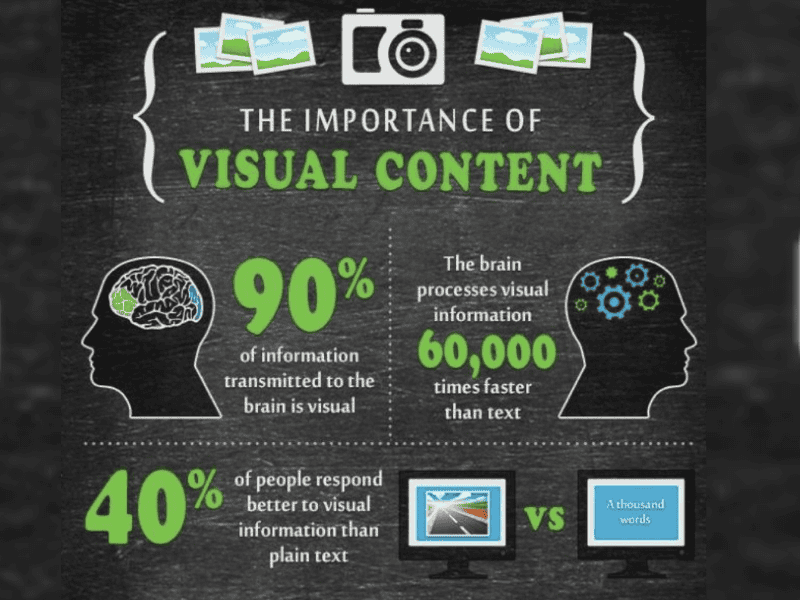
Infographics can help increase engagement
Why Should Small Businesses Use Content Marketing?
With smart planning, content marketing for small businesses brings long-term value without needing a big advertising budget. Here’s why it’s a smart move for your brand.
Build Brand Awareness
Content marketing enables small businesses to enhance their visibility and establish a strong brand presence. By consistently delivering valuable content, businesses can differentiate themselves in a competitive market.
Notably, 70% of consumers prefer learning about a company through articles rather than advertisements, highlighting the effectiveness of content-driven strategies.
Establish Authority and Trust
Publishing valuable, research-backed content shows expertise and builds customer confidence. According to the demand metric, businesses that maintain an active blog typically generate 67% more monthly leads compared to those without one, and trust comes from transparency, authenticity, and value in everything content marketing delivers. (source)
According to Edelman’s Trust Barometer, 81% of consumers say they must be able to trust a brand to buy from it. And trust comes from transparency, authenticity, and value that everything content marketing delivers (Source)

Blog created 67% more monthly leads
Drive More Traffic and Conversions
Content marketing drives valuable organic traffic by attracting users already searching for your offerings. Optimizing with relevant keywords boosts your chances of ranking on page one, and organic search accounts for 53.3% of all web traffic (According to BrightEdge). Well-structured content like blogs and guides draws in potential buyers. With strong CTAs, you’ll convert more visitors into leads or customers.
Cost-Effective Marketing
According to the Content Marketing Institute, content marketing costs 62% less than traditional marketing and generates about 3x more leads. That’s because a single piece of high-quality content, like a blog, video, or eBook, can keep working for you months or even years after you publish it.
Here’s how it saves you money:
- No need for a huge ad budget.
- Your content without having to advertise on other landing pages or newspapers.
- Evergreen content continues to attract traffic without ongoing spend.
- You can repurpose content into different formats (blog → video → email).

Rehost content to different platforms to save costs
4. When Should Small Businesses Use Content Marketing?
Timing is everything, and content marketing for small businesses is most effective when used strategically. Let’s look at the best moments to invest your efforts.
When You’re Building Brand Recognition
For small businesses, especially new ones, building brand recognition is the foundation of long-term success. Content marketing is the best way to get your name out there without spending heavily on ads. By sharing valuable, engaging and consistent content, you’re essentially introducing your business to the world in a way that feels authentic and helpful.
Examples:
- A small fashion brand can publish styling tips, videos explaining fabric choices, or the story behind each collection.
- A newly launched skincare company can share blogs about ingredient benefits, customer skin transformation stories, or short Instagram tutorials on skincare routines.
When you tell your brand’s story through a blog, a YouTube video or a series of Instagram Reels, you leave an impression and build recognition with customers.
When You Want to Nurture Customer Relationships
Content marketing builds long-term relationships by continually providing value and reminding customers why they chose your brand in the first place. Every time you share a useful tip, a behind-the-scenes update, or an inspiring customer story, you’re nurturing that connection.
According to Forbes, customer retention is five times cheaper than acquisition, so it makes business sense to keep existing customers happy and engaged. Email newsletters, exclusive updates, or even personalized content are great tools to keep your audience close.
When You Need to Drive Sales and Conversions
If you’re looking to boost sales, content marketing is an effective strategy. When you create content that directly addresses a customer’s pain points and offers your product or service as the solution, you’re guiding them through the buyer’s journey.
Examples: A blog titled “5 Signs Your Air Conditioner Needs Repair” with a CTA to book a service.
When You Want to Improve SEO
Content marketing plays a critical role in improving your website’s SEO. The more useful, keyword-rich, and user-centric your content is, the more likely you are to rank for what your customers are already searching for.
According to BrightEdge, 68% of online experiences begin with a search engine and content marketing plays a massive role in ensuring you’re found. (source)

Content marketing is essential for boosting your website’s search engine visibility
5. Which Elements of Content Marketing Should Be Balanced to Optimize Cost and Resources?
When resources are tight, content marketing for small businesses must be carefully planned. Here’s how to strike the right balance and stretch every dollar.
Focus on High-Impact, Low-Cost Content
For small businesses, it’s essential to focus on content that delivers high value but doesn’t require significant investment. For example, writing blog posts or using social media platforms effectively can generate long-term results with a relatively low budget.
Use Automation Tools for Efficiency
Leveraging tools like Hootsuite, Buffer, or Mailchimp can automate your content scheduling, social media posting, and email marketing efforts. By streamlining tasks like email blasts or social post scheduling, small businesses can cut down on labor costs without sacrificing quality or consistency.
Reuse and Repurpose Content
Repurposing content across different platforms helps save time and effort while maximizing the reach. A blog post can be turned into an infographic, a video or social media posts, which extends the value of a single piece of content. This not only saves time but also reinforces messages across channels, ensuring maximum ROI.
Align Content with Business Goals
Each piece of content should support a clear business goal. Whether it’s driving traffic, increasing leads, or building loyalty. Align your content with key metrics like CAC, LTV, or traffic-to-lead conversion rates. This connection helps guarantee that your time and budget are invested effectively.

Align content with your business goal
6. Content Marketing Strategies Suitable for Small Businesses
Content marketing for small businesses works when the strategy is clear and focused. Here’s how to build one that works.
Start Small and Scale Gradually
For small businesses, it’s essential to start with a manageable content strategy that fits within your budget and capacity. Over time, you can scale your efforts as your resources and business grow.
To build a strong brand voice, you need to be consistent. Specially:
- Use the same tone in all your posts
- Use clear and easy-to-understand language
- Show your brand’s personality in every piece of content.
- Share your values in each post.
This approach helps people recognize your brand fast. This makes your content stand out in the market.
Focus on Quality Over Quantity
Instead of producing large amounts of content, focus on creating fewer, higher-quality pieces that resonate deeply with your target audience. High-quality content will naturally perform better in terms of engagement and conversion. They also rank better on search engines. This leads to more traffic and leads.
Example: Instead of 10 short posts, write one complete guide each week. Add visuals and data to support your small business content ideas. This content performs better and builds trust faster.
Leverage Social Proof and UGC
When a customer posts a review or shares your product, that’s user-generated content (UGC). UGC reduces the time, cost of creating new content. At the same time, it helps build trust, adding authenticity to your brand.
Example: Ask customers to tag your brand when they use your product. Share their posts and add testimonials to your website and emails.
Customer reviews add authenticity to your brand
7. How GODI Can Help Small Businesses with Content Marketing
If content marketing for small businesses feels overwhelming, GODI is here to help. Our team delivers tailored, budget-friendly solutions that drive results.
Expertise in Social Media Platforms
At GODI, we understand how each social media platform works. We design content to match the platform and target audience. GODI will help you grow with smart and practical strategies for your budget.
Tailored Content for Business Goals
We create content that supports your business goals ,including brand awareness, lead generation ,and customer loyalty. We choose the best content types and channels for your needs. This helps you reach the right people without wasting resources.
We use:
- Avoid producing unnecessary content.
- Choose free or low-cost tools and platforms.
- Focus on organic growth before paid ads.
These methods save time and money and give better returns. If you’re doing content marketing for startups, you need a clear plan. GODI helps you create that plan.
Cost-Effective Solutions
GODI offers affordable content marketing services, ensuring you get the most out of your marketing budget. We help businesses achieve long-term growth without the high costs associated with hiring additional staff or agencies.
Cost-saving reasons:
- We manage everything in-house.
- Use automation to save hours.
- Reuse your content on different platforms.
- Focus on high-value, low-cost strategies.

Golden Owl Digital is a smart choice for content marketing for businesses
Conclusion
Content marketing for small businesses is a smart, budget-friendly way to grow. It helps you reach new people, build trust, and sell more. With the right mix of strategy, consistency, and support, content can turn your brand into a trusted voice in your industry.
Let Golden Owl Digital help you craft a cost-effective and impactful content marketing strategy that drives results for your small business.




